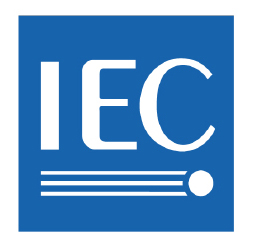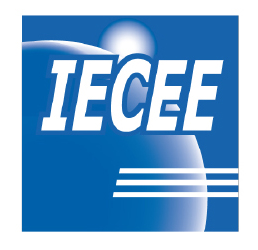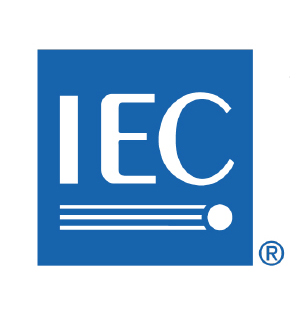Cisco Systems Norway AS
Cisco Systems Norway AS
| Address(es) |
|
| Website | Not available |
| Status | MEMBER |
| Acceptance date | 2024-01-23 |
Further information
Stage | Country | Name |
|---|---|---|
2 | Norway |
LEGEND: Scope Limitations
- RA : Audio amplifiers with audio power > 0,5 Watts excluded
- RC : Apparatus with connection(s) to a cable distribution system excluded
- RSH : Shredders excluded
- RT : Apparatus with connection(s) to a telecommunication network excluded
- RV : CRT (cathode ray tubes)/ picture tubes, plasma/LCD or other video apparatus excluded
- ROUT : Equipment intended for installation outdoors excluded
- RWPT : Wireless power transmitter excluded
Category | Name | Tests/Clauses | Acceptance Date | Responsible National Certification Body |
|---|---|---|---|---|
ITAV | IEC 62368-1:2018 | Accepted clauses:5.2 Classification of electrical energy sources 5.4.1.10.3 Ball pressure test5.4.2 Clearances 5.4.3 Creepage distances 5.4.8 Humidity conditioning 5.4.9 Electric strength test 5.5.2.2 Stored discharge on capacitors 5.6.6.2 Resistance of protective conductors and terminations (test up to 2x20A rated current)5.7.2.1 Measurement of touch current 5.7.2.2 Measurement of prospective touch voltage 5.7.4 Unearthed accessible parts5.7.5 Earthed accessible conductive part 5.7.7.2 Prospective touch voltage and touch current associated with paired conductor cables6.2.2 Electrical power sources (PS) measurements forclassification 6.2.3. Determination of Potential Ignition Sources8.2 Mechanical energy source classifications8.4 Safeguards against parts with sharp edges and corners8.6.2 – 8.6.11 Stability, all tests5.4.1.4, 9.3, B.1.5, B.2.6 Temperature measurements B.3 Abnormal operating condition tests B.4 Fault condition tests E Test conditions for equipment containing audio amplifiersF.3.10 Test for permanence of markings M.3 + M.10 Batteries (Coin or consumer grade only)P Safeguards against conductive objectsQ Circuits intended for interconnection with building wiringT.2 – T.9 All stability tests | 2024-01-23 | |
ITAV | IEC 62368-1:2014 | Accepted clauses:5.2 Classification of electrical energy sources 5.4.1.10.3 Ball pressure test5.4.2 Clearances 5.4.3 Creepage distances 5.4.8 Humidity conditioning 5.4.9 Electric strength test 5.5.2.2 Stored discharge on capacitors 5.6.6.2 Resistance of protective conductors and terminations (test up to 2x20A rated current)5.7.2.1 Measurement of touch current 5.7.2.2 Measurement of prospective touch voltage 5.7.4 Earthed accessible conductive parts5.7.5 Protective conductor current5.7.6.2 Prospective touch voltage and touch current associated with paired conductor cables6.2.2 Power source circuit classifications 6.2.3. Classification of Potential Ignition Sources8.2 Mechanical energy source classifications8.4 Safeguards against parts with sharp edges and corners8.6 Stability of equipment8.7 Equipment mounted to a wall or ceiling8.9 Wheels or casters attachment requirements8.10 Carts, stands, and similar carriers8.11 Mounting means for rack mounted equipment 9.2 Thermal energy source classifications5.4.1.4, 9.3, B.1.5, B.2.6 Temperature measurements B.3 Abnormal operating condition tests B.4 Fault condition tests E Test conditions for equipment containing audio amplifiersF.3.10 Test for permanence of markings M.3 + M.10 Batteries P Safeguards against conductive objectsQ Circuits intended for interconnection with building wiringT.2 – T.9 All stability test | 2024-01-23 | |
ITAV | IEC 62368-3:2017 | Accepted clauses: Cl. 5 | 2024-01-23 | |
OFF | IEC 60950-1:2005 | 1.6.2 Input current 1.7.11 Durability (marking label) 2.1.1 Protection in operator access area2.1.1.7 Discharge of capacitors in equipment 2.2 SELV circuits 2.4 Limited current circuits2.5 Limited power sources 2.6.3.4 Resistance of earthing conductors and their terminations 2.10.3 Clearance measurements 2.10.4 Creepage distance measurements 3.1.5 Beads and ceramic insulators3.1.9 Termination of conductors4.1 Stability 4.2 Mechanical strength (except 4.2.8 and 4.2.9)4.4 Protection against hazardous moving parts 4.5 Thermal requirements 4.5.5 Ball pressure test of thermoplastic parts 4.6.5 Adhesives for constructional purposes5.1 Touch current measurement 5.2 Electric strength tests 5.3 Abnormal operating and fault conditions | 2024-01-23 | |
OFF | IEC 60950-1:2005/AMD1:2009 | 1.6.2 Input current 1.7.11 Durability (marking label) 2.1.1 Protection in operator access area2.1.1.7 Discharge of capacitors in equipment 2.2 SELV circuits 2.4 Limited current circuits2.5 Limited power sources 2.6.3.4 Resistance of earthing conductors and their terminations 2.10.3 Clearance measurements 2.10.4 Creepage distance measurements 3.1.5 Beads and ceramic insulators3.1.9 Termination of conductors4.1 Stability 4.2 Mechanical strength (except 4.2.8 and 4.2.9)4.4 Protection against hazardous moving parts 4.5 Thermal requirements 4.5.5 Ball pressure test of thermoplastic parts 4.6.5 Adhesives for constructional purposes5.1 Touch current measurement 5.2 Electric strength tests 5.3 Abnormal operating and fault conditions | 2024-01-23 | |
OFF | IEC 60950-1:2005/AMD2:2013 | 1.6.2 Input current 1.7.11 Durability (marking label) 2.1.1 Protection in operator access area2.1.1.7 Discharge of capacitors in equipment 2.2 SELV circuits 2.4 Limited current circuits2.5 Limited power sources 2.6.3.4 Resistance of earthing conductors and their terminations 2.10.3 Clearance measurements 2.10.4 Creepage distance measurements 3.1.5 Beads and ceramic insulators3.1.9 Termination of conductors4.1 Stability 4.2 Mechanical strength (except 4.2.8 and 4.2.9)4.4 Protection against hazardous moving parts 4.5 Thermal requirements 4.5.5 Ball pressure test of thermoplastic parts 4.6.5 Adhesives for constructional purposes5.1 Touch current measurement 5.2 Electric strength tests 5.3 Abnormal operating and fault conditions | 2024-01-23 |



